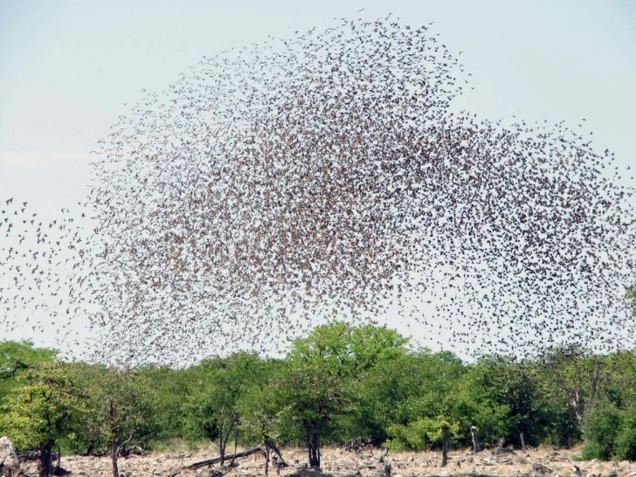KARACHI – Pakistan has already begun to feel the leading edge of what is currently the worst locust outbreak in more than 25 years. The locust invasion of more than 360 billion creatures started in the Middle East, moved to Africa, and is now invading South Asia.
The swarm, described as “Biblical in proportion,” has consumed vegetation and crops throughout Saudi Arabia, Ethiopia, Kenya, and Somalia, where the infestation is being called “an unprecedented threat.”
Desert locusts consume at an amount equal to their own body weight every day. Imagine the damage inflicted by 360 billion locusts in multiple swarms that are over 40 miles wide. Imagine the threat posed to food security for the people who are in the path of the onslaught.
Food insecurity almost always leads to sickness and conflict, each of which can lead to the death of thousands of innocent people.
Not to mention that we are outnumbered 45 to 1 by the locusts. And that’s counting the size of this swarm versus the entire global population. Given normal weather conditions over the next several months, experts predict the invading locust population could expand 500 times its current size. That’s 180 trillion insects with voracious appetites that can travel more than 90 miles each day,
Somalia announced a national emergency because “the uncommonly large locust swarms are consuming huge amounts of crops.”
On Sunday, February 2, 2020, the government of Pakistan declared a national emergency as the front lines of locusts are already destroying staple crops of cotton, wheat, and maize.
“We are facing the worst locust infestation in more than two decades and have decided to declare a national emergency to deal with the threat.”
Reports indicate that locust swarms have been breeding in near ideal conditions in Pakistan, Iran, and South Asia during the entire last six months of 2019.
A combination of cyclones hitting the Arabian peninsula and a longer than usual monsoon season were natural factors contributing to the ideal breeding conditions. Geopolitical complications added to the robust breeding period. Economic sanctions left Iran without the necessary pesticides. The Kashmir conflict held the attention of the participating entities, pushing the potential locust plague downward on their list of priorities.
A locust invasion is much more problematic than countless insects in the sky, on the ground, and in the bushes and trees. It can literally initiate a humanitarian crisis. This particular locust plague could unleash a disaster of epic proportions at the same time the world is trying to cope with the deadly coronavirus and other humanitarian needs.
The actual extent of how this plague will unfold is still unknown. It could potentially damage the livelihood of one-tenth of the world population.
This is headline-worthy news that is not being widely reported in America. The threat is genuine.
Pray for the millions who have already been affected and for those who live in the expected path of the locust invasion.
To comprehend the scope of the problem, click here to view a six-minute video on YouTube originally broadcast by CBSN on January 31st.
To read more news on South Asia on Missions Box, go here.
Sources:
- The Economic Collapse, 360 Billion Locusts And Growing – A Plague Of ‘Biblical Proportions’ Is Destroying Crops Across The Middle East And Africa
- NPR, Largest Plague Of Locusts In A Quarter Century Hits Africa And Middle East
- Strange Sounds, Uncontrolled Swarms of Devouring Locusts to Hit East Africa, Middle East, and Southwest Asia IN NO TIME Leaving Behind Barren Earth
- Daily Mail, Pakistan declares national emergency after its worst locust plague in 27 years as video shows millions of the insects sweeping through city in Saudi Arabia
Image Source: Wikimedia, (CC BY-SA 2.0)
Video Source: Worst locust outbreak in decades ravages East Africa threatens food supply, CBS News, YouTube
